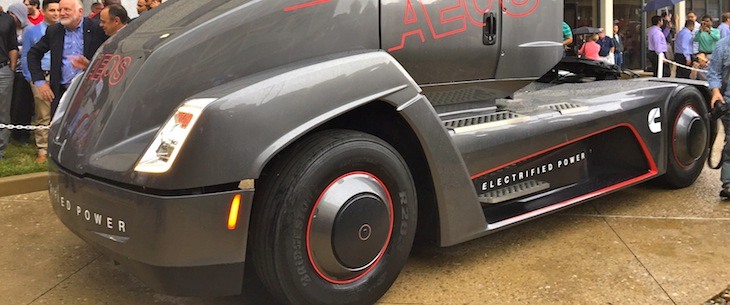Trucking industry policy on automated trucks emphasizes continued role for drivers
by October 27, 2017 1:40 pm 434 views

American Trucking Associations established a 21-point policy for the development of automated trucks that includes solutions maintaining roles for drivers. The trade organization’s board of directors approved the policy Tuesday (Oct. 24) at the ATA’s annual Management Conference and Exhibition in Orlando, Fla.
“Over the past year, ATA has been active in this debate, advocating for recognition of the importance of the trucking industry when it comes to the development of automated vehicles,” said Chris Spear, president and CEO for the ATA. “The adoption of this policy gives a clear direction about what our industry will expect and require as policymakers establish a comprehensive framework for automated vehicles.”
Shannon Newton, president of the Arkansas Trucking Association, said she’s reviewing this and all the other policies the board adopted at its meeting Oct. 24. These policies are “used to direct the advocacy efforts of the industry in legislative and regulatory arenas. So the policy doesn’t have an immediate impact on the trucking industry in Arkansas.”
“However, it does provide the framework for how we as an industry work with lawmakers to ensure that the advancement of technology is not hindered by public policy,” Newton said. “Automated and connected vehicle technologies have the potential to dramatically impact nearly all aspects of the trucking industry.”
“The trucking industry relies on an interstate highway system that facilitates the free flow of goods between states,” she said. “As automated truck technology is developed, tested and commercialized, it is critical that federal, state and local laws do not create disparities that limit commerce and obstruct the successful adoption of these potentially safety- and productivity-boosting technologies.”
Automated vehicles and connected vehicle technologies could “dramatically impact nearly all aspects of the trucking industry,” according to the policy. “These technologies can bring benefits in the areas of safety, environment, productivity, efficiency and driver health and wellness.”
“Automated driving technology is the next step in the evolution of the safety technology currently available and will help to further improve driver safety and productivity, as well as the safety of other motorists and road users,” the policy shows. The many levels of the technology “will assist the driver and in some cases, handle the driving task. The application of automated and connected vehicle technology in the trucking industry will center on solutions in which there remains a role for drivers, recognizing the duties and requirements drivers have beyond operating the vehicle.”
Some of the topics in the policy include safety, the roles for federal and state governments, uniformity across state lines, infrastructure and education.
“ATA has always been at the leading edge of developments in the trucking industry, and now with this policy in hand, we are poised to continue leading this industry into a more automated future,” said ATA Chairman Dave Manning, president of TCW Inc. “I’d like to thank all the ATA staff and members who worked diligently in crafting this foundational document and look forward to the challenge of using it to advocate on behalf of our industry.”
Click here for a PDF of the three-page policy.
NATURAL GAS TRUCK TRENDS
Between January and August, retail sales of natural gas Class 8 trucks in the United States and Canada were flat, from the same period in 2016, according to ACT Research. Class 8 trucks are the big rigs that haul the trailers.
“Despite the uncertainty of environmental change on the horizon, and continuing low oil prices, the future of alternative fuels led by NG/RNG is positive,” said Ken Vieth, senior partner and general manager at ACT Research. “The challenges of alternative fuel availability and distribution will be overcome; time is the biggest unknown.”
Between January and August, refuse fleets purchased the most natural gas vehicles, “followed by transit and school bus operators and then over-the-road applications,” Vieth said.
“Electric vehicle technology continues to make strides as it slowly penetrates various medium duty vehicle classifications with Class 8 on the docket. All viable commercial vehicle power alternatives must not be considered to accurately measure potential cost savings for fleets, government applications and other, while meeting overall current and future emissions targets. Going green is a real market variable, while diesel is the king today.”
ACT will host a webinar on fuels at 1 p.m. Oct. 31.
